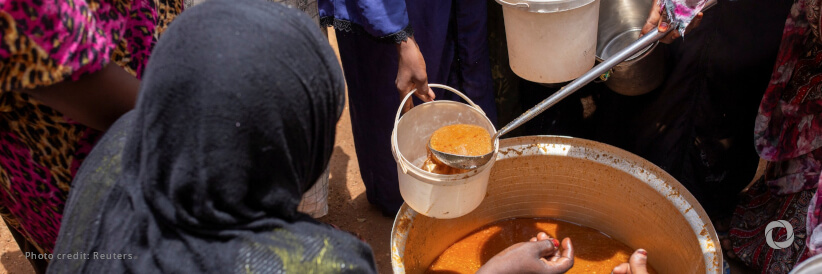Alarming new food security data from South Sudan shows that 57 per cent of the population will be acutely food insecure through the 2025 lean season with returnees fleeing the war in Sudan and young children facing some of the highest levels of hunger and malnutrition as economic pressures, climate extremes, and the effects of Sudan’s war drive worsening hunger
The latest Integrated Food Security Phase Classification (IPC), released, shows more than 85 per cent of returnees fleeing Sudan will be acutely food insecure through the next lean season, starting April. They will also make up almost half of those facing catastrophic hunger, as they struggle to rebuild their lives amidst an unprecedented economic crisis, severe flooding, and prioritization of resources as needs outpace funding.
“The emergence of the economic crisis and associated high food prices as a key driver of food insecurity sends a powerful message that it is time to collectively increase our investment in supporting South Sudanese to produce their food. This will not only reduce the household food budget but will also create more employment opportunities in the agriculture sector and increase household incomes so that they can seek more healthy diets,” said Meshack Malo, Country Representative of the Food and Agriculture Organization of the United Nations in South Sudan.
While returnees fleeing the Sudan war are expected to have the highest levels of food insecurity, many communities across South Sudan will continue to struggle as the economic crisis, extreme flooding, prolonged dry spells, and conflict continue to interrupt gains made.
“Year after year we see hunger reaching some of the highest levels we’ve seen in South Sudan and when we look at the areas with the highest levels of food insecurity, it’s clear that a cocktail of despair – conflict and the climate crisis – are the main drivers,” said Mary-Ellen McGroarty, Country Director and Representative for the United Nations World Food Programme (WFP) in South Sudan. “To reach zero hunger in South Sudan, the root causes of hunger must be addressed; communities need peace, they need stability, and they need opportunities to build or rebuild livelihoods and help them withstand future shocks.”
Meanwhile, almost 2.1 million children are at-risk of malnutrition, up from 1.65 million. Children are returning to nutrition centers multiple times throughout the year as they continue to suffer from poor access to safe drinking water and sanitation. Illness is a major contributing factor to their malnutrition and almost half of all children included in the data collected had been ill in the two weeks prior.
“Malnutrition is the result of a series of crises, most notable for South Sudan is ongoing poor sanitation and prevalence of waterborne diseases, alongside severe food insecurity. UNICEF is deeply concerned that the number of children and mothers at risk of malnutrition will continue to increase unless efforts to prevent malnutrition by addressing its root causes are scaled up, alongside the provision of immediate nutrition support to treat malnutrition among children who are at higher risk of death,” said Ms. Hamida Lasseko, UNICEF Representative in South Sudan.
The IPC also indicates that the impact of concurrent crises in South Sudan is far-reaching with the overall number of people facing acute food insecurity projected to increase to almost 7.7 million (57 percent of the population) through the next lean season, up from 7.1 million this year.

